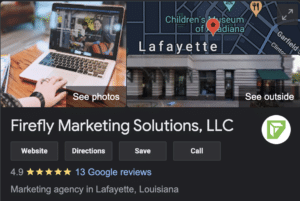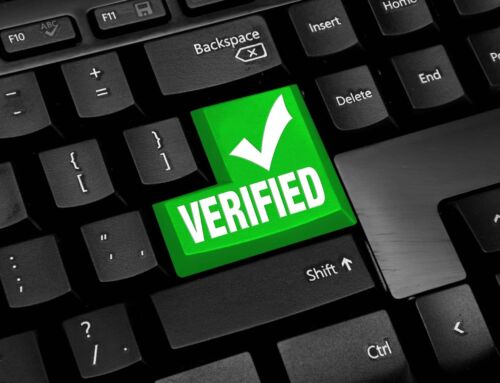
Online Reputation Management in 2022

What is Reputation Management?
Reputation management is an effort to influence how people think about you or your brands when viewed online. In other words, you are what others are saying about you. Your reputation is what others think you are. Several popular online sites, such as Google and Yelp, have used themselves as a determinant of brand reputation. Online reputation managers are committed to strengthening and improving how you are perceived on sites that manage your reviews.
Popular Review Sites
Did you know that 90% of customers read online reviews before making contact with a business? Reviews placed by your customers on the broad and industry-specific review sites will not only affect your direct business, but they are also an important tool in your digital marketing. Your reviews play a major role in your business’s success.
Google and Yelp are just two examples of general business review engines. For many vertical markets, an industry-specific leader may emerge such as avvo.com for legal reviews. Putting an effort into general and industry-specific review sites can lead to a better understanding of your customers’ needs and increase the number of positive reviews.
| Review Website | U.S. Alexa Ranking | Reviews Best For | Avg. Monthly U.S. Traffic |
| Google My Business | 1 | any business | 158.03 million |
| Amazon | 3 | e-commerce related | 85.44 million |
| 4 | any business | 85.57 million | |
| Yelp | 64 | any business | 40.47 million |
| Trip Advisor | 118 | related to food, restaurant, travel | 28.27 million |
| Houzz.com | 750 | home services/contractors | 6.21 million |
| avvo.com | 694 | legal | 6.17 million |
| BBB | 647 | any business | 6.15 million |
| Angies List | 1,755 | service related business | 5.44 million |
| Manta | 957 | small business | 4.48 million |
Online Reputation Management Tools
Firefly has developed a strong relationship with two tools that lead the industry in reputation management. Google My Business and BrightLocal. Each provides specific tools that provide insight and management of key data points for our clients.
Google My Business
When you’re searching for local services, chances are you are using Google. To help local businesses reach local customers, Google developed a product called Google My Business. It’s essentially a free profile Google creates based on information found on the internet or your website. Businesses can claim these profiles and keep them up to date with relevant information.
The most critical feature of Google My Business? The reviews. Google understands the value of online reviews and makes sure to showcase this feedback in search results. Reviews even act as a ranking factor in local searches. With Google My Business you are able to manage and respond to reviews, share links to request reviews, and get notifications when a new review rolls in.

BrightLocal
Another tool we like to use is BrightLocal. This platform is our local SEO Swiss army knife. With it, we’re able to monitor local performance, correct or gain more listings across the web, and monitor and request reviews. Their interactive review tool allows you to create a review dashboard and a personalized template that can be sent to customers via email, text, in-store device, or direct link (flyers, receipts, etc).
One of the best parts of this platform is its ability to link directly to online profiles. For example, say someone leaves positive feedback for your business. The tool allows the customer to then copy that feedback and post it directly to your Google My Business, Yelp, Avvo, or Facebook profiles in just a couple of clicks. As the reviews come in, you can monitor the overall campaign performance and see who left their feedback and where.
The tools we chose work well to deliver value to our clients. There are plenty of other choices to manage your reputation goals.
How To Respond to Reviews
Responding to your online reviews will aid in SEO goals. Google states that responding to reviews will help in your local rankings. AND, your reply to a review needs to be timely. Put tools in place to alert you when reviews or comments are left within your focused directories. Our clients with reputation management services have notifications set up to alert them to a variety of circumstances.
Not everyone is perfect. Bad reviews happen. Each review, good or bad, is an opportunity. Use it to locate where you can improve or give a pat on the back to a team member. Follow the steps outlined below to reduce the impact of less than great reviews.
Good reviews need to be grown. It is the best way to reduce the visibility of a bad review. Statistics show that an unsatisfied customer is 2-3 times more likely to leave their review. This puts a thumb on the scale that is not a true representation of your business. Developing a strategy to promote and encourage the reviews of happy customers will allow the true image and reputation of your company to come through.
How to respond to a bad review?
1 – Respond timely
People want to feel heard. Be sure to respond to negative reviews promptly before they escalate and more potential customers read the review.
2 – Be professional
Don’t personally react to a negative review. Respond in a polite, professional manner and don’t blame others or create excuses. Use this as an opportunity to showcase how well your business handles issues and how you strive for success and satisfaction.
3 – Take control of the issue by taking it offline
After acknowledging the issue, offer to handle it off-line, away from the public eye. Please provide an email address or phone number where you can discuss and resolve the issue. You can then write a public comment on the review page describing the agreed-upon solution once you’ve resolved the issue.
4 – Request that fake or misleading reviews be removed
The Consumer Review Fairness Act (CRFA) protects people’s ability to share their honest opinions about a business’s products, services, or conduct, in any forum, including social media.
If you know that reviews are fake or misleading they must be removed. Examples of misleading reviews could include those written by:
- friends or family without disclosing your personal relationship
- a competitor
- someone paid to write the review who has not used your product or service
- automated spam reviews
- a member of your staff
If it’s spam you can report it and have it removed eventually by the platform.
How to ask customers for reviews
The part everyone hates. The big ask. Asking for reviews can feel daunting and even a little awkward. The important thing to remember is that everyone at some point in their lives has been asked to leave a review. You’re not asking for anything brand new here. Just for a few minutes of their time.
The good news is that there are a variety of ways you can approach this.
- Email campaign: Gather a list of 15-20 happy, repeat customers that you have a good relationship with. Send them a personal email thanking them for their business and support and asking them to share their feedback. There are numerous templates online that include exact wording but remember – make it your own. Customers can tell the difference.
- Printed materials: Use signs, banners, receipts, and handouts to remind customers to leave reviews without having to mention them verbally.
- Follow-up call: Follow up with customers a few days after their purchase or service and ask them to leave a review or provide any feedback they may have.
- Employees: If appropriate, advise your staff to ask for a review after a positive interaction with a customer. Example: “I’m so happy you liked [product/service], we’d love if you could leave us a review on Google!”
- Links: Include links to your review sites on your website, social media profiles, and email signatures or campaigns.
- Cup of Joe: Treat them to their favorite cup of coffee or tea. A little incentive can go a long way!
Conclusion
Your online reputation needs to be managed. Your future customers are making decisions based on what they are finding at review sites you may not even know exist. By using the right tools, monitoring can be done easily to give you the opportunity to grow the good reviews, and fix the bad. Firefly has experts on staff that manage these tools with great efficiency. Consider getting a free evaluation for Firefly Marketing. We would love to become your online reputation partner.
Resources
https://marketwithfirefly.com/local-seo-guide/
https://moz.com/learn/seo/getting-local-reviews







